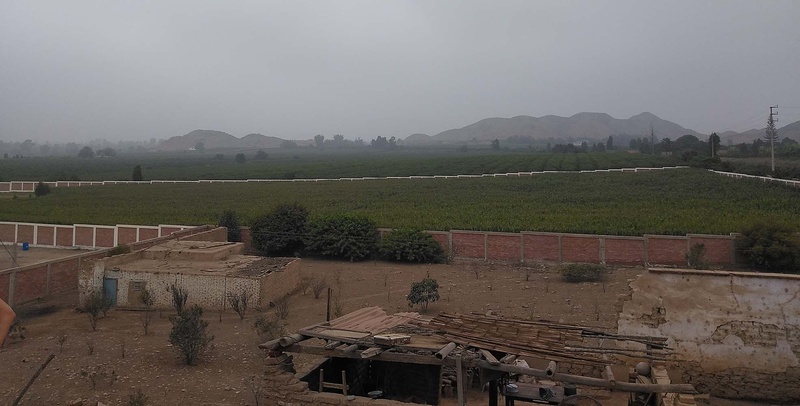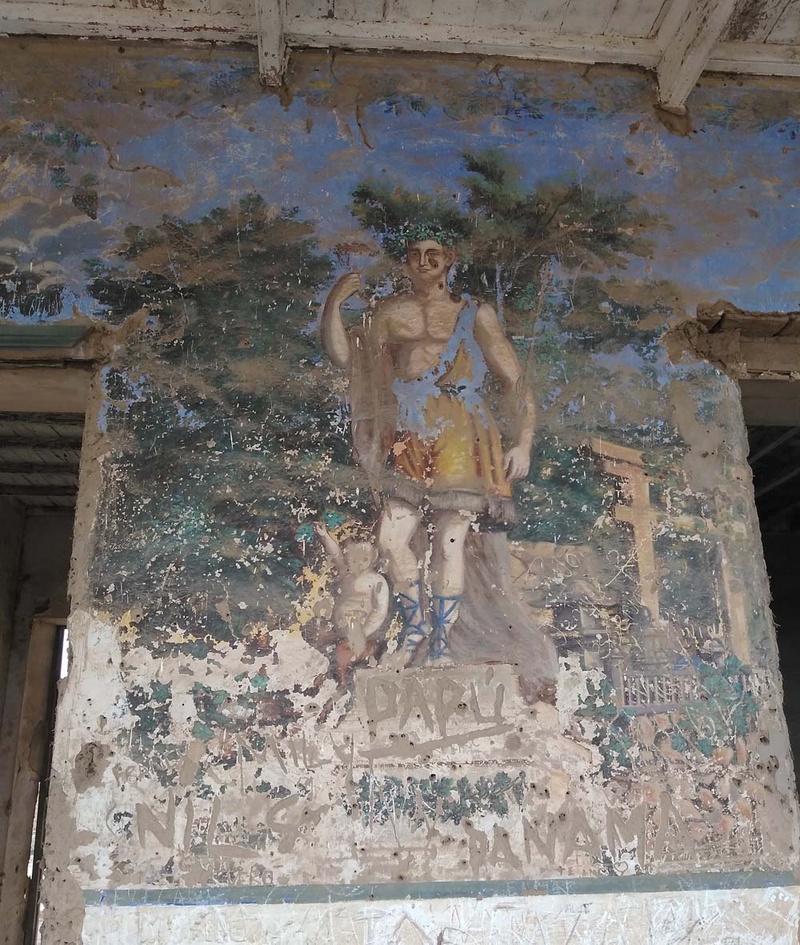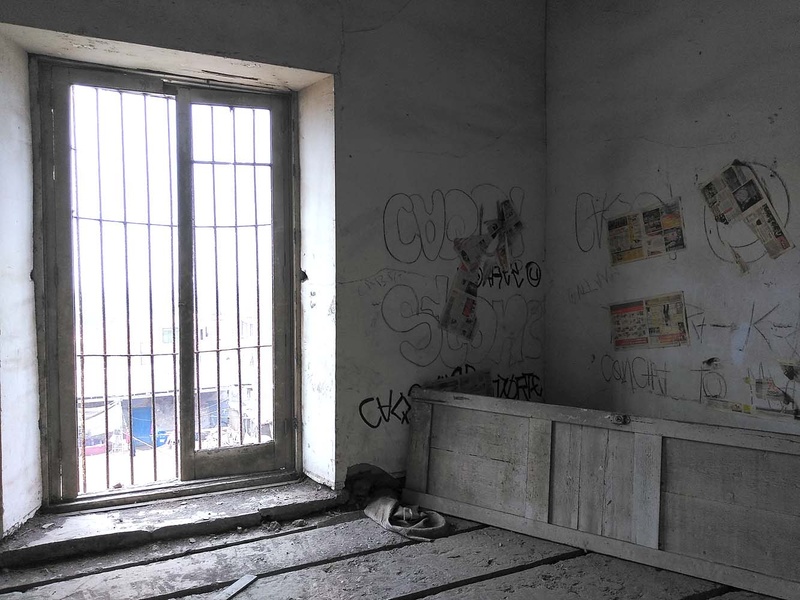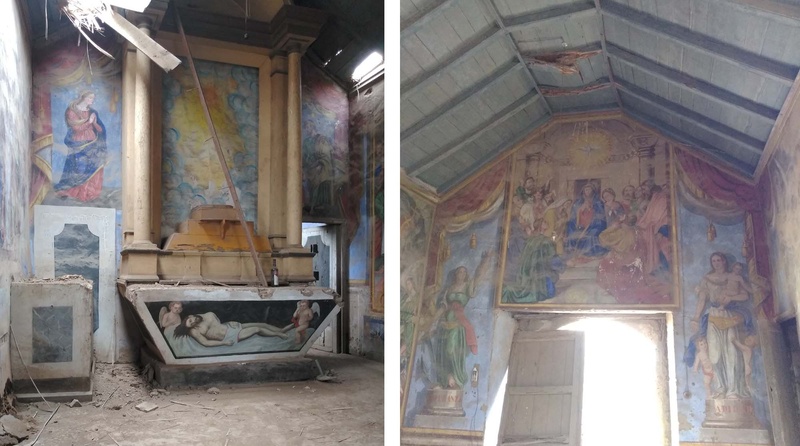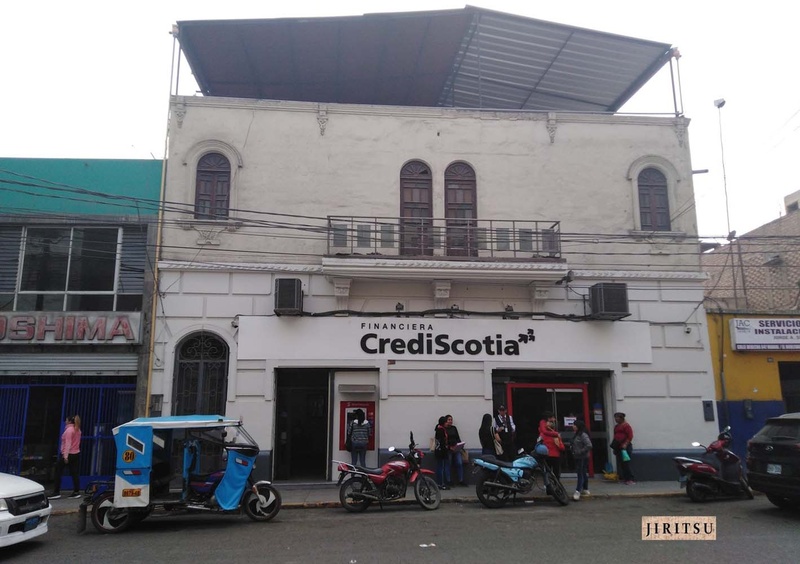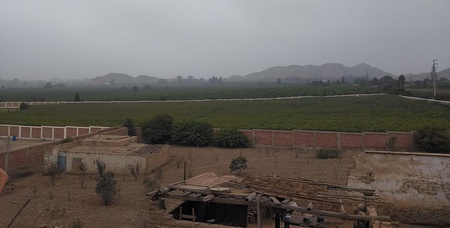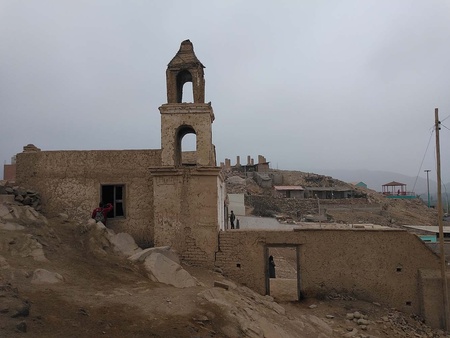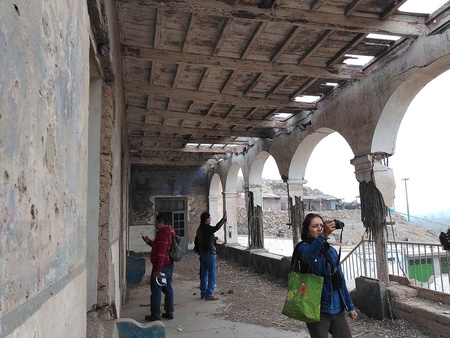With the agrarian reform (1969-1979), 9,065,772 haciendas and 15,826 farms in Peru were expropriated and thousands of peasants became owners of the land they worked. This marked the decline of the large estates and large estates, which survive as best they can today in the face of the passage of time, the apathy and forgetfulness of local authorities and the hardships of their current owners. As a Nikkei community, the Huaral haciendas evoke history and characters like Nikumatsu Okada.
David Pino, cultural promoter and director of Lima La Única, organizes study visits and historical walks to disseminate history and its current reality. Last Saturday the 18th (May 18, 2019) we accompanied you to Huaral to visit the haciendas of San José, La Huaca, Huando, Palpa and Caqui, and see their current state.
The “two” Khaki haciendas
In Aucallama (Huaral district), the Caqui hacienda is located. It has a privileged view of the valley and a greeting on its façade (“Welcome/CAP Villa Hermosa Ltd. No. 274/Khaki”) that reveals who its current owners are (the CAP or Villa Hermosa Agrarian Production Cooperative). But before the land reform, one of its owners was Nikumatsu Okada. David Pino explains to us during the tour.

Caqui is distinguished from the other haciendas by its beautiful murals, painted by anonymous artists and dated between 1865 and 1870 (as they appear on the murals). There is no space that has not been covered with some mythological image or landscape from some part of the world (you can even see a Japanese Torii ); although many details are barely appreciated and with great difficulty, especially in the murals that are exposed to the elements.
There are also murals in what remains of the chapel, with scenes from the life of Jesus and the three theological virtues (faith, represented with a cross; hope, with an anchor and charity, with a woman carrying children ); in addition to a crucified Christ inspired by an original by Anton Van Dyck, dated March 7, 1869. Despite the obvious state of abandonment, the Caqui hacienda and chapel hides art worthy of a museum.
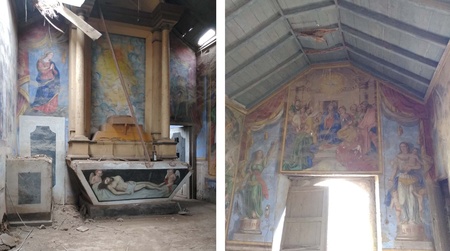
But we don't need to imagine what they looked like in their best times. In Japan, there is an exact replica of the Khaki Hacienda House and its chapel in the Little World Museum in Inuyama, Aichi Ken. This open-air museum, opened in 1983, exhibits homes from all over the world on a full scale and Kaqui was chosen to represent Peru.
David took the opportunity to share an anecdote. In the Municipality of Aucallama, there is a photo of the Hacienda Caqui de Japon instead of the original, which is in Huaral and in ruins. Although he also revealed a disturbing revelation.
“This must also be said. Neighbors here told us that when the Japanese came to take measurements and photos of the farm to build the full-scale replica in Japan, with support and permission from the municipality, they left a contribution that no one here saw. Although the optimal thing would have been to make an improvement, nothing was done.”
Regarding Little World, David believes that it is possible that the Caqui hacienda was included in the museum for its beautiful murals and, also, for Nikumatsu Okada, who once brought prosperity and technology to Huaral.
Nikumatsu Okada
Okada came to Peru in the first contingent of Japanese immigrants (1899) and worked as a laborer on the Palpa ranch. Like his partner Hatsusaburo Motonishi, Okada became, years later, a prosperous merchant and businessman. He leased several haciendas (such as La Huaca and Caqui), used machinery to modernize agriculture in Huaral and improved production. In 1941, Okada was decorated by Hirohito for merit for his work and work in Huaral.
But their economic power was mistaken for dominance over the valley and further exacerbated anti-Japanese sentiment during World War II. The government confiscated his property and deported Okada to a concentration camp in the United States. What was once his magnificent mansion (known as the “Okada mansion”) still exists and currently looks abandoned on Calle Derecha de Huaral.
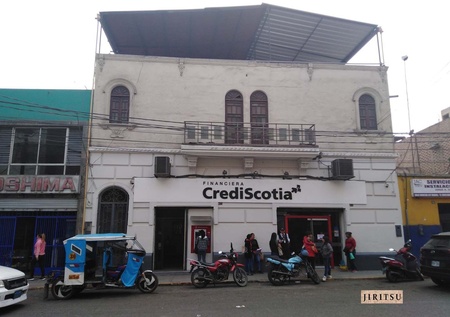
“You only love what you know”
But just like Caqui, there are other haciendas in Huaral such as San José and Palpa that, despite their monumental value, are in a state of abandonment. Their owners, beneficiaries of the agrarian reform, occupy the interior or surroundings of the haciendas, despite the precariousness. Almost all the haciendas have the same problems: there are quincha and adobe walls about to collapse, they suffer from vandalism and theft within the place (due to old iron frames, wooden decorations, etc.) and they even become nests of birds like owls, etc. But there are exceptions.
There are haciendas that have become tourist spots, because they are preserved in better conditions thanks to their custodians, who are the owners of the haciendas (which in the case of Huando, currently number 380). According to their own limitations, they keep the place clean, prevent theft and offer the guide service. Additionally, the La Huaca hacienda includes a visit to its crypt as part of the tour and rents its facilities to celebrate weddings.
Obviously, we have two realities: one, where the locals are unaware of the history of the place where they live and another, where the locals take care of their heritage and use it positively to attract tourists or interest in the place, because they know its history. In Aucallama alone, how many properties with monumental value could disappear due to time and oblivion? And with this, how much history could we forget that does not appear in books, on the internet or in a museum? Until the authorities are aware of its importance, there are initiatives that fill this gap, such as what David Pino does, who revitalizes our history and heritage with monumental value through historical walks and tours.
FACT: For more information, consult the Facebook of Historical Walks through Lima (David Pino).
*This article was originally published in the Peru Shimpo newspaper on May 28, 2019.
© 2019 Peru Shimpo / Milagros Tsukayama Shinzato



